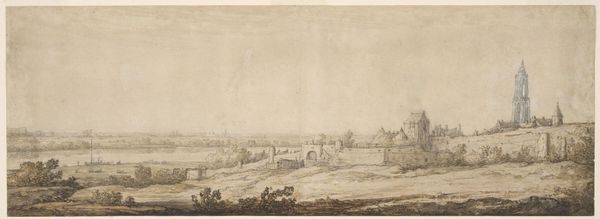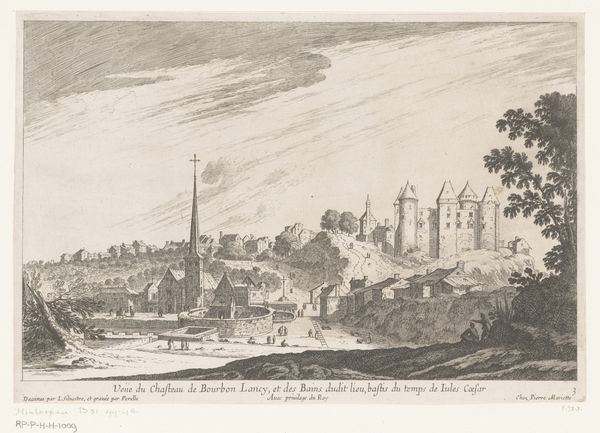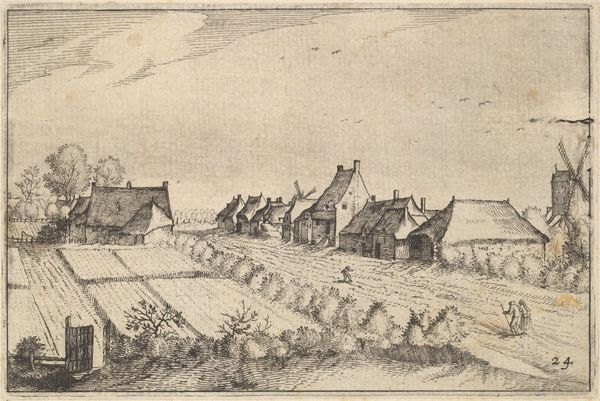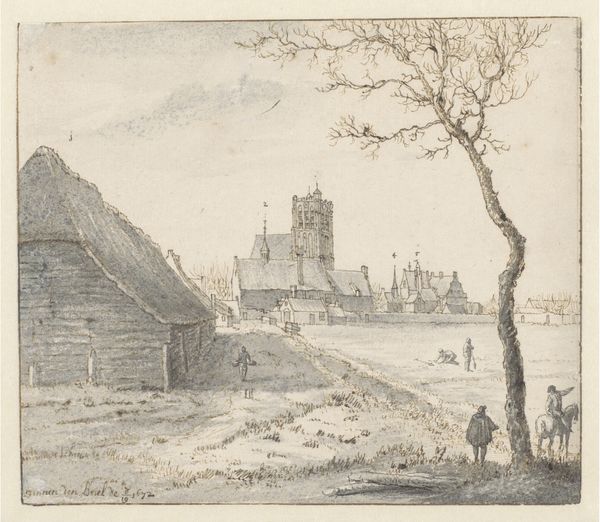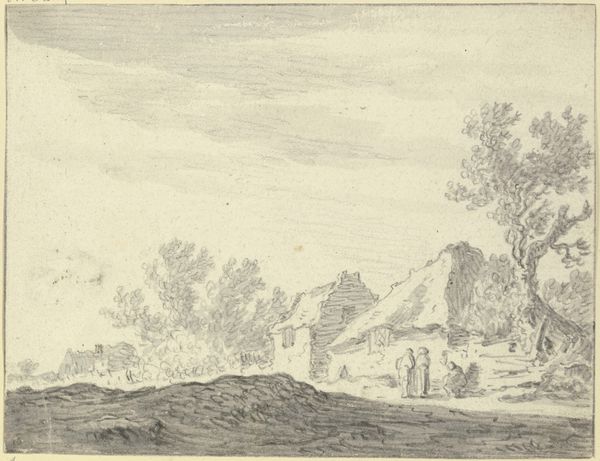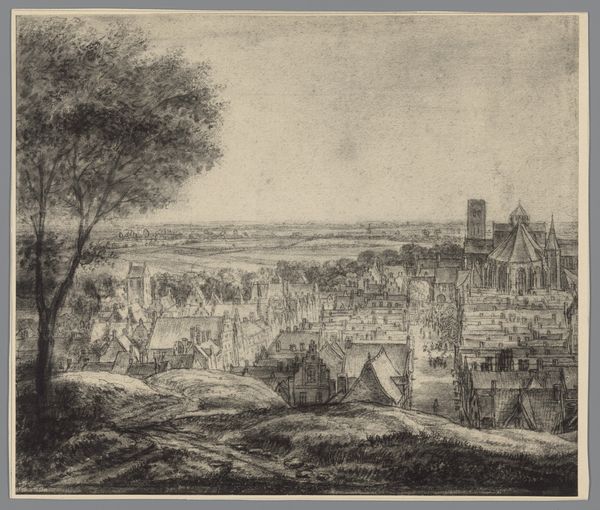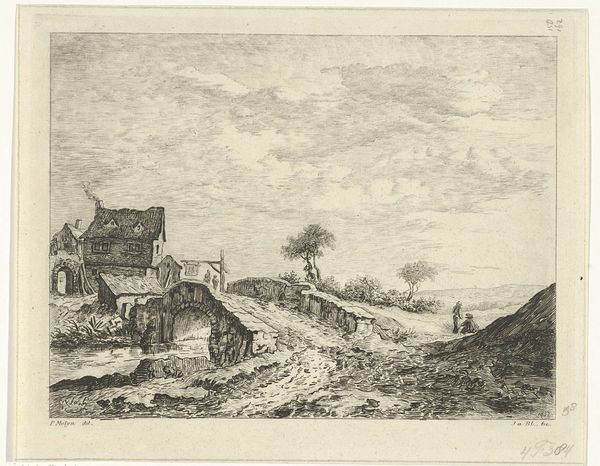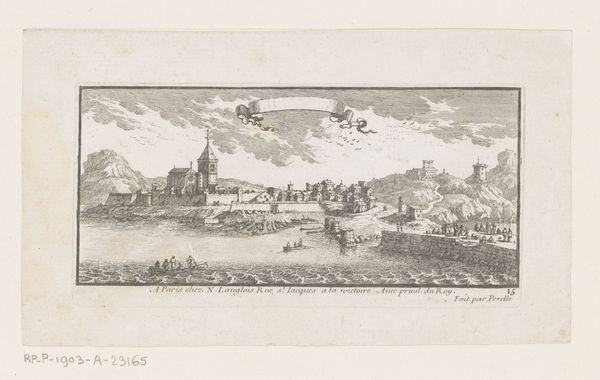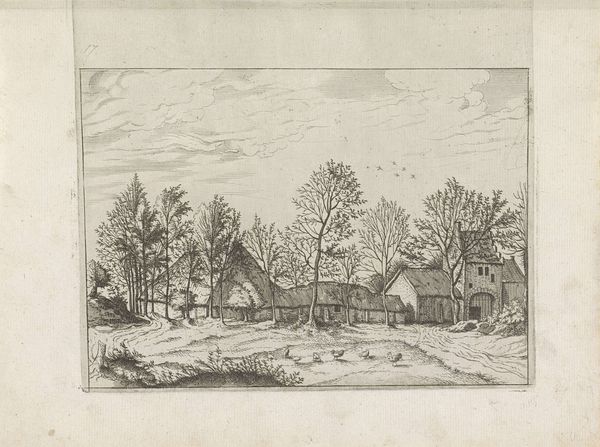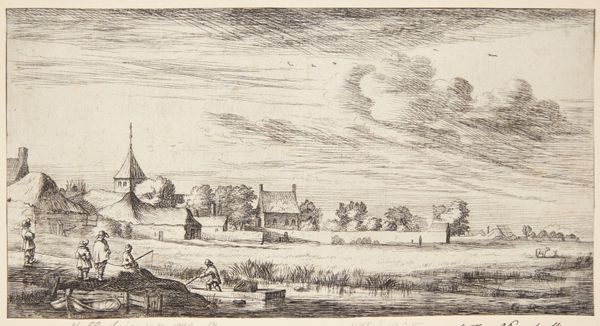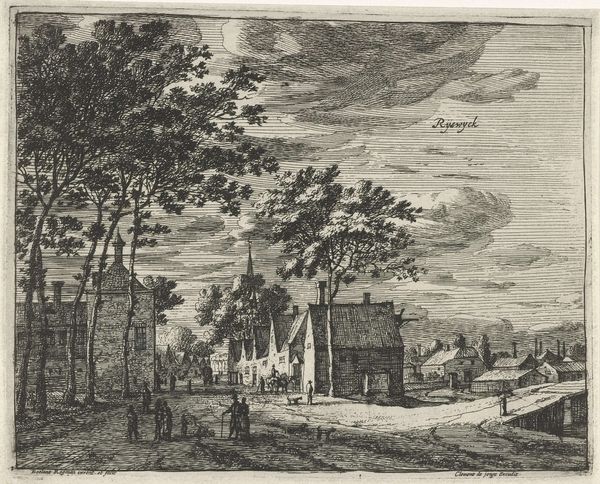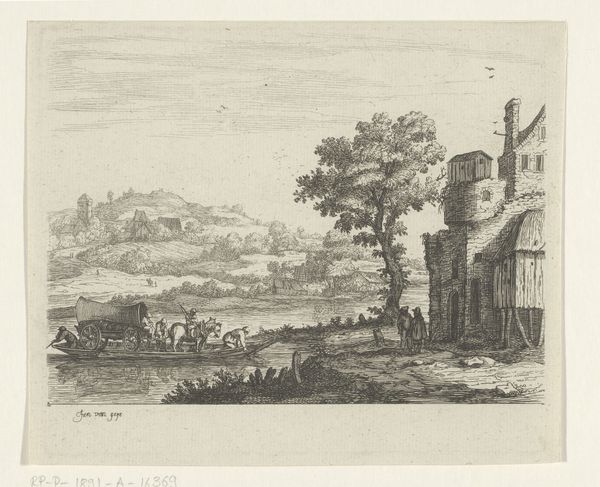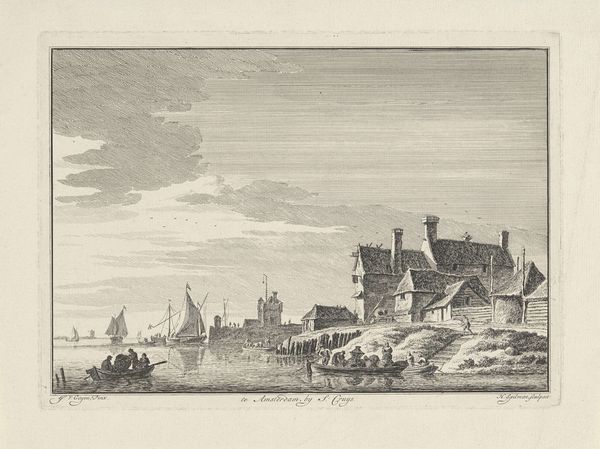
drawing, pencil
#
drawing
#
dutch-golden-age
#
landscape
#
pencil
#
realism
Dimensions: height 170 mm, width 297 mm
Copyright: Rijks Museum: Open Domain
Editor: We are looking at a pencil drawing, *View of the Village of Nieuwenhoorn, Zuid-Holland,* by Barend Klotz, dating probably from 1672-1673. I'm struck by the starkness of it all; it feels very grounded. What can you tell me about this work? Curator: The artist emphasizes the rough-hewn materiality of the village. We see the thatched roofs, the simple construction of the homes—materials sourced directly from the landscape. Consider the labor involved in thatching those roofs. Does it prompt you to think about the economics of the community depicted? Editor: I hadn't considered that specifically. I was thinking more about how the uniformity of materials ties the village together, how they're all reliant on the same resources. Curator: Precisely! And the limits imposed by the available resources shape the architecture, and therefore the life, of the village. Also note, in rendering, how pencil would have been readily available and a very efficient mode of artistic creation. How does the choice of drawing impact our reading of the piece? Editor: Perhaps the fact that it's a drawing lends a feeling of immediacy. It seems like a quick impression, less formal than a painting might be, and therefore, closer to the everyday lives of the people depicted. Curator: Good point! A painting of this scene might emphasize idealized beauty, but the drawing draws our attention to the simple material existence of the village and those who live there, how labor literally builds up the town. Editor: I am walking away with a fresh viewpoint on Dutch Golden Age landscapes. Focusing on how natural resources were utilized offers new perspective. Curator: Indeed, by emphasizing process and material, it grounds the artwork in its social and economic reality, helping us appreciate the world view of the people of that village and era.
Comments
No comments
Be the first to comment and join the conversation on the ultimate creative platform.
